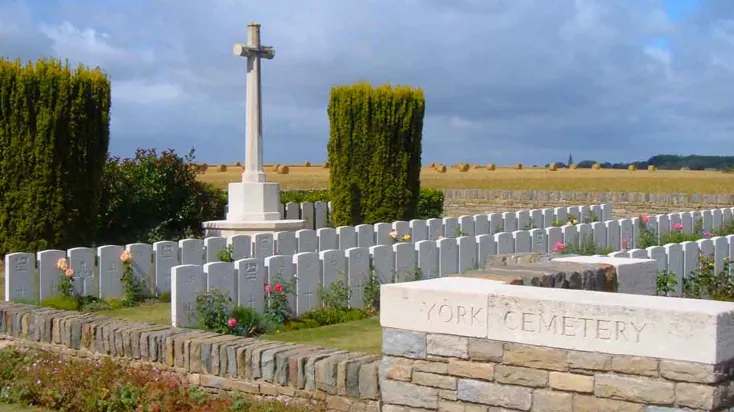War Graves Commission 20th March 2024
Commonwealth War Graves Commission 20th March 2024
Report contributed by Bruce Watt
On the 20th of March, Mark Bailey gave a talk to Teignmouth Probus Club about “The Commonwealth War Graves Commission. Mark is a MacRoberts Programme volunteer who works for the CWGC and gives talks such as this to raise awareness of the origins and on-going work.
He opened his talk by illustrating the scale of the of the work with graves of 1.7 million war-dead in 23,000 locations. There is an ongoing programme of maintenance and renovation. CWGC is one of the biggest horticultural organisations in the world.
It is funded by six member governments: Australia, Canada, India, New Zealand, South Africa, and the UK. The annual budget is in the region of £60 million.
The CWGC commemorates all those British Empire/Commonwealth service personnel who died during the two world wars. Initially this was defined as those serving in the armed forces but was extended to Merchant Seamen and to civilians who died as the result of enemy action, for example aerial bombing. Marked graves were rare and often left untended and little if anything was recorded. The memorial to the British Waterloo dead was shown as an example.
Sir Fabian Ware was the initiator of its work. Being too old to fight he served in a mobile Red Cross unit during WW1. He began recording the location of graves which would otherwise be lost for ever. By 1915 the work was recognised by the War Office and incorporated into the British Army as the Directorate of Graves Registration and Enquires. In May 1917, the Imperial War Graves Commission was established by Royal Charter,
The CWGC's work began in earnest after the Armistice. Once land for cemeteries and memorials had been guaranteed, the enormous task of recording the details of the dead and locating and formalising burials and cemeteries began. By 1918, some 587,000 graves had been identified and a further 559,000 dead were registered as having no known grave.
There were many graves spread across the battlefields. The CWGC built large cemeteries and “concentrated” the burials. It also built memorials close to the site of large battles where there were many unidentified casualties. The Menin Gate at Ypres is an example.
After 1915 the policy was not to repatriate the dead but there are CWGC cemeteries and graveyards in Britain. These are for those who died from their wounds after returning, or who died as a result of subsequent enemy action.
Casualties in the Navy and Airforce with no known grave are commemorated at their home port or station.
Three principles of commemoration were established in 1917 and are applied today: each of the dead should be commemorated by name on the headstone or memorial, headstones and memorials should be permanent, headstones should be uniform with no distinction made on account of military or civil rank.
A regimental, unit or national crest or badge is usually at the top, followed by the name and service number. A personal inscription may also be at the bottom.
Every year the graves of around 100 servicemen are discovered on the old Western Front alone, some of whom can be identified. Equally, researchers continue to identify service personnel and civilians who died during the war but whose names, for a variety of reasons, were not included in the original records. Their names are then added to the appropriate commemorative plaque.
Mark explained how the CWGC website can be used to search for individual casualties and see the information recorded for them. There are also tours and exhibitions at many locations. (www.cwgc.org search option.)
Mark told us more detail about an individual soldier who is buried in a CWGC grave at Bovey Tracey as an example of how he came to be there and how information was discovered about his story.
The vote of thanks was given by Peter Lewis.
